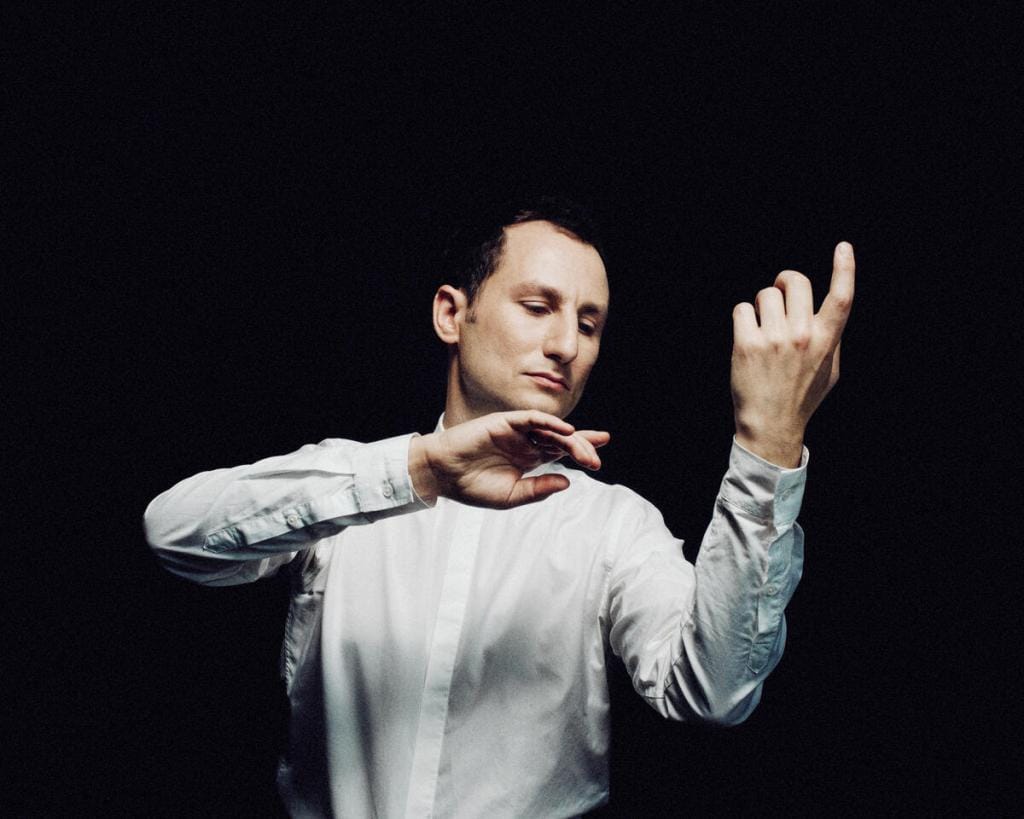- Gathering Note
- Posts
- Tension and drama abound in CSO’s performance of Tchaikovsky’s Fourth and Walton’s Viola Concerto
Tension and drama abound in CSO’s performance of Tchaikovsky’s Fourth and Walton’s Viola Concerto

Antoine Tamestit, Credit: Julien Mignot
Having been captivated for years by Tchaikovsky’s Fourth Symphony in F minor, I’ve attended countless performances, each offering their own insights. In my younger years, I found solace in the symphony’s emotionally charged melodies and the struggles against Fate they embodied. Growing older, however, I began to feel that Tchaikovsky’s histrionics sometimes missed their mark in concert. Yet, with the Chicago Symphony season barely a week old, Thursday’s performance, conducted by Nikolaj Szeps-Znaider — a frequent guest at the podium of Orchestra Hall — promised a compelling fresh perspective on this well-trodden classic by juxtaposing it with two seldom-performed works: Ralph Vaughan Williams’ Overture to The Wasps and William Walton’s Viola Concerto.
While Tchaikovsky’s Fourth was no doubt the hook that brought many in that evening – myself included – the highlight of the evening was undoubtedly Walton’s Viola Concerto, which closed the first half of the program. This composition masterfully combines melodic beauty and rhythmic intricacy. Like Tchaikovsky’s symphony, Walton’s concerto emerged during a period of personal turmoil for its composer, which has shaped how this often-overlooked masterpiece is viewed by musical scholars. But it was not the work’s emotional antecedents were not what made it the program’s high point: It was instead the palpable chemistry between soloist Antoine Tamestit and Szeps-Znaider. Tamestit’s bow skillfully drew out Walton’s blending of varied musical styles with modern harmonies. His darkly elegant tone coupled with effortless virtuosity created a performance that created a memorable listening experience. And, as a parting gift to the audience, Tamestit played the driven fourth movement from Paul Hindemith’s Viola Sonata Op.25 No.1 as an encore.
Ralph Vaughan Williams’ Overture to The Wasps provided an energetic opening to the concert, setting a buoyant tone that was eclipsed later by the more pathos-driven works by Walton and Tchaikovsky. The lively rhythms and vibrant orchestration in Vaughan Williams’ characteristic style immediately captured the audience’s attention. Each section of the orchestra helped build the work’s playful and spirited atmosphere, demonstrating the composer’s gift for rich harmonic textures.
The challenge with Tchaikovsky’s Fourth Symphony is for a conductor and the orchestra to find something new to say. It is no easy task. The history of musical giants that have tackled the work and done so with exceptional results is long – and many of these performances have been in Orchestra Hall. There is maybe no other United States ensemble more accomplished in Tchaikovsky’s final symphonies than the Chicago Symphony. Live or recorded, this orchestra has Tchaikovsky in its marrow. The task for Szeps-Znaider – then – was understandably high. The strings attacked the first movement with precision and drive while the brass delivered the goods time and again, as they are wont to do. Even the woodwinds engaged the spirit with their lilt phrasing and clarity throughout, though particularly in the second movement. Yet an otherwise gripping performance was in the first movement at times hindered by a lack of rhythmic flexibility.
Despite this occasional rigidity, as the final notes of Tchaikovsky’s Fourth Symphony echoed through Orchestra Hall, it became clear that Thursday’s concert was not just another revisit with a familiar work. Szeps-Znaider’s interpretation overall embraced the tension and drama at the heart of this work. Yet, it was the contrast between this and Walton’s introspective Viola Concerto that gave the evening its resonance. Tamestit’s performance breathed life into Walton’s complex score, highlighting the music’s vulnerability and depth and making the entire program a poignant one.